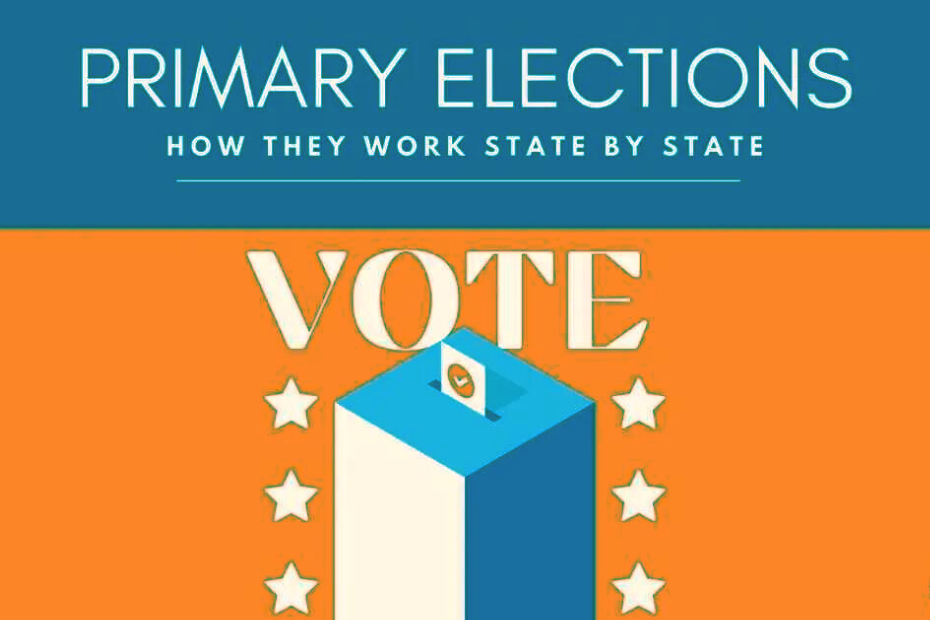Last updated on November 30th, 2023 at 09:46 am
In the United States, the primary election system varies significantly from state to state. Each state adopts a method that aligns with its unique political culture and legal framework. Broadly, primaries fall into three categories: closed, open with partisan registration, and open with nonpartisan registration.
Closed Primaries
In closed primaries, only voters registered with a specific party can vote in that party’s primary. This system ensures that party members have exclusive rights to choose their candidates. For instance, in a Republican primary, only registered Republicans can vote.
Open Primaries with Partisan Registration
These primaries allow registered party members to vote in their respective party’s primaries. However, they also permit independent voters to participate in any party’s primary, though they can only choose one per election cycle. This system offers a blend of inclusivity and party-specific selection.
Open Primaries with Nonpartisan Registration
In this format, all voters, regardless of party affiliation, can vote in any party’s primary but are limited to one primary per election cycle. This approach maximizes voter participation and choice.
States and Their Primary Types
Alabama: Open with nonpartisan registration. “All voters must choose one party’s ballot to vote on, but they are not tied to that party,” as per the World Population Review.
California: Uses a top-two system. “California is attempting a Top-Two system, where all registered voters receive one ballot regardless of party affiliation, and the top two move on to the general election,” according to the World Population Review.
New Mexico: Recently allowed unaffiliated voters to participate in primaries by changing their registration status at the polls.
Washington: Also employs a top-two primary system, listing all candidates on the same ballot.
Which States Use Which Type of Primaries?
Here’s a list of all U.S. states with the types of primary elections they use. This categorization includes open, closed, and variations of these primary systems:
- Alabama: Open
- Alaska: Closed (Republicans), Open (Democrats)
- Arizona: Semi-Closed
- Arkansas: Open
- California: Top-Two Open
- Colorado: Semi-Open
- Connecticut: Closed
- Delaware: Closed
- Florida: Closed
- Georgia: Open
- Hawaii: Open
- Idaho: Open (Democrats), Closed (Republicans)
- Illinois: Open
- Indiana: Open
- Iowa: Semi-Open
- Kansas: Closed (Republicans), Open (Democrats)
- Kentucky: Closed
- Louisiana: Blanket Primary
- Maine: Closed
- Maryland: Closed
- Massachusetts: Semi-Closed
- Michigan: Open
- Minnesota: Open
- Mississippi: Open
- Missouri: Open
- Montana: Open
- Nebraska: Semi-Closed
- Nevada: Closed
- New Hampshire: Semi-Closed
- New Jersey: Closed
- New Mexico: Closed
- New York: Closed
- North Carolina: Semi-Closed
- North Dakota: Open (No registration by party)
- Ohio: Semi-Open
- Oklahoma: Semi-Closed
- Oregon: Closed
- Pennsylvania: Closed
- Rhode Island: Semi-Closed
- South Carolina: Open
- South Dakota: Semi-Closed
- Tennessee: Open
- Texas: Open
- Utah: Semi-Closed
- Vermont: Open
- Virginia: Open
- Washington: Top-Two Open
- West Virginia: Semi-Closed
- Wisconsin: Open
- Wyoming: Semi-Closed
This list reflects the primary election systems as they stand, but it’s important to note that states can and do change their primary systems, so it’s always good to check for the most current information.
Support and Opposition
Supporters of open primaries argue that they “could increase voter participation as there are fewer restraints on your options,” as noted by the World Population Review. On the other hand, opponents worry about the potential for “dilution and manipulation if one party plans to have its voter vote in the other party’s primary,” leading to strategic voting.
FAQs about Primary Election Types
What is an Open Primary?
In an open primary, voters of any affiliation may vote for the candidate of any party. They are not required to be members of a particular party to vote in that party’s primary.
What is a Closed Primary?
A closed primary is a type of primary election in which only registered members of a specific political party can vote in that party’s primary elections.
Which States Use Open Primaries?
States like Alabama, Arkansas, Georgia, Michigan, Missouri, Montana, South Carolina, Texas, Vermont, and Virginia use open primaries.
What is a Semi-Closed Primary?
In a semi-closed primary, registered party members can only vote in their party’s primary, but unaffiliated voters can choose to vote in any party primary.
Can Independent Voters Participate in Primaries?
This depends on the state. In semi-closed or open primary states, independent voters can participate. However, in closed primary states, they cannot vote in party primaries unless they register with that party.
What is a Top-Two Primary?
Used in California and Washington, a top-two primary lists all candidates on the same ballot, regardless of party. The top two vote-getters advance to the general election, regardless of their party affiliation.
How Do Primaries Differ for Presidential Elections?
Some states may have different rules for presidential primaries compared to state and congressional primaries. For example, a state might use a closed primary for state elections but an open primary for the presidential election.
Are There Any States with Unique Primary Systems?
Yes, Louisiana, for example, uses a blanket primary system where all candidates, regardless of party, appear on the same ballot, and the top two advance to a runoff if no candidate wins a majority.
Why Do States Choose Different Primary Systems?
States choose their primary systems based on their political culture, legal frameworks, and historical preferences. The choice reflects a balance between party autonomy and voter inclusiveness.
Can Primary Systems Change?
Yes, states can change their primary systems. Changes are often the result of legislative action, ballot initiatives, or court rulings.
The diversity in primary election types across the United States reflects the complex and varied political landscape of the country. Each system has its proponents and critics, and the debate over which method best serves the democratic process continues. As states like California and New Mexico experiment with new formats, the evolution of primary elections remains a dynamic and significant aspect of American politics.
